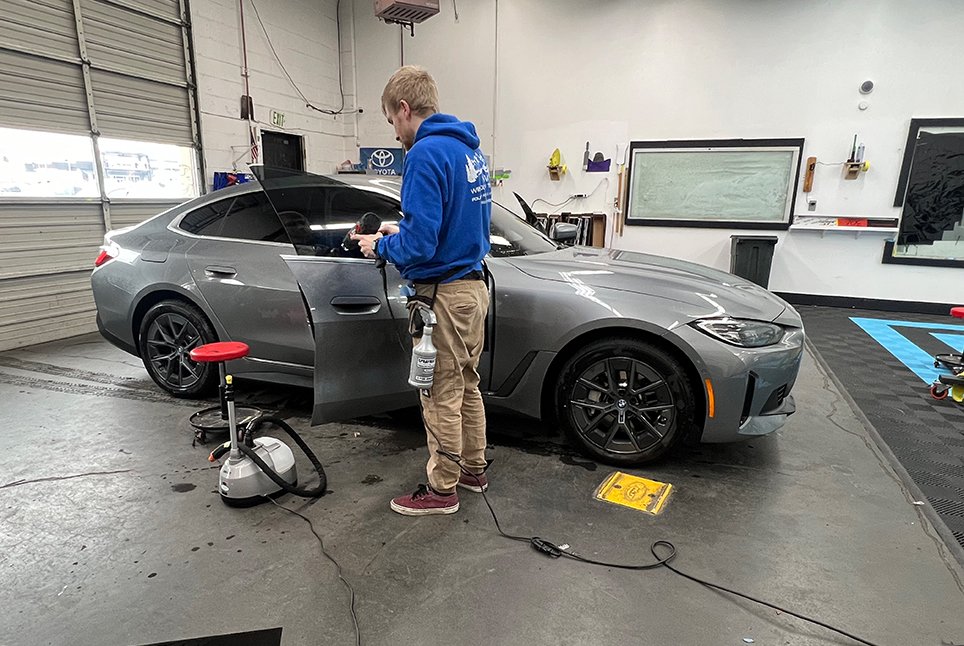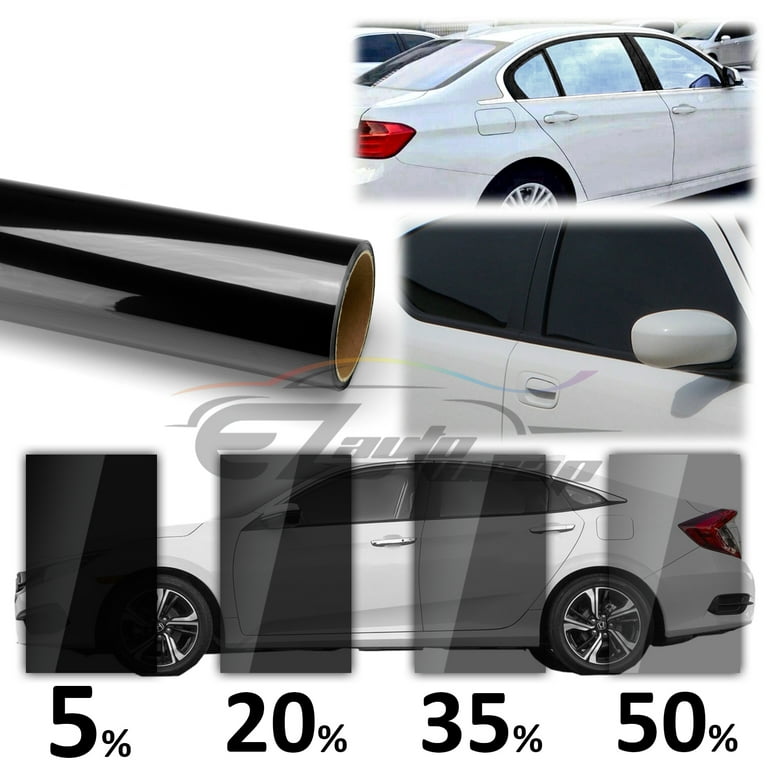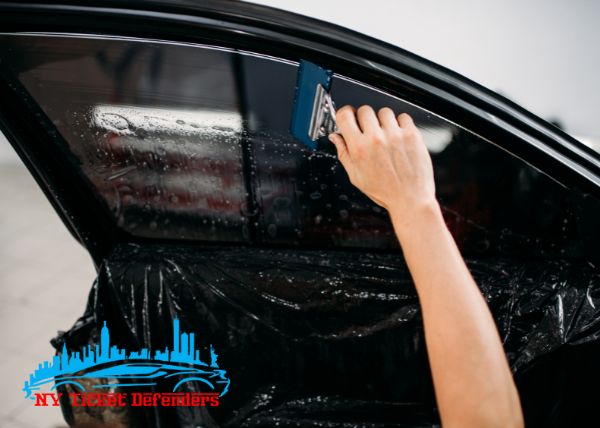Home Window Tinting Laws and Guidelines: What You Required to Know Prior To Tinting Your Vehicle
Prior to proceeding with home window tinting for your vehicle, it is necessary to acquaint yourself with the varied legislations and standards that regulate this practice throughout various states. These guidelines dictate the acceptable levels of tint darkness, usually gauged by visible light transmission (VLT) percents, and consist of specific stipulations for front windshields aimed at making sure roadway security. In addition, specific jurisdictions may provide clinical exemptions for people with certifying conditions. Understanding these complexities can conserve you from prospective lawful ramifications, however what are the certain regulations in your state?
Review of Home Window Tinting Laws
Home window tinting legislations are frequently subject to variation across various territories, showing local policies and safety and security factors to consider. These legislations dictate the allowable degrees of color darkness and reflectiveness on automobile windows, making sure that vehicle drivers keep ample exposure while likewise protecting against dangerous UV rays and heat.
A lot of regulations identify home window tinting based on the Visible Light Transmission (VLT) percentage, which shows the quantity of light that can travel through the home window. Usually, reduced VLT percentages represent darker colors. Laws frequently distinguish in between the front, side, and rear home windows, with stricter restrictions applied to the front windshield to enhance safety for both the driver and various other roadway individuals.
Compliance with window tinting guidelines is vital, as infractions can result in penalties, obligatory elimination of the color, and possible boosts in insurance coverage premiums. It is necessary for lorry owners to familiarize themselves with local legislations before continuing with window tinting installations.
State-by-State Tint Rules
Comprehending the particular window tinting regulations in each state is vital for lorry owners looking for to abide by the regulation. Each state in the united state has actually established its own collection of policies controling home window tinting, which can differ considerably. These policies often determine the allowed degrees of color darkness, the kinds of windows that can be tinted, and any medical exceptions that might use.
For example, states like The golden state have strict restrictions on color darkness for front home windows, while others, such as New Mexico, may enable darker colors. In addition, specific states mandate particular exposure percents for numerous windows, consisting of the windshield, front side home windows, and rear home windows. It is important for automobile owners to familiarize themselves with their state's regulations to avoid potential fines or charges.
Moreover, some states might call for a certification sticker to be positioned on tinted home windows, suggesting compliance with state regulations. Failure to stick to these guidelines not just risks lawful consequences however can likewise influence safety and security and exposure while driving. As a result, vehicle proprietors need to perform detailed research or speak with neighborhood authorities to guarantee complete understanding and compliance with state-by-state color regulations.
Allowed Tint Kinds and levels
Lots of car owners might be stunned to learn that allowed color levels and kinds differ commonly across different states. Each state has developed its own policies regarding the permitted darkness and reflectivity of home window color, often determined by Visible Light Transmission (VLT) percentages. VLT refers to the quantity of light that can go through the colored windows; therefore, a lower percent indicates a darker tint.

Moreover, the kinds of tint products permitted can their website vary, with some states forbiding metallic or mirror-like surfaces. It is necessary for car proprietors to acquaint themselves with their state's details legislations to guarantee compliance. Non-compliance can result in penalties, mandatory removal of the color, or other legal consequences, making it crucial to understand these guidelines before continuing with setup.
Medical Exemptions for Tinting
While not all states supply allowances for medical exceptions pertaining to home window tinting, those that do acknowledge the need for specific people to enhance presence and comfort due to medical conditions. Numerous clinical problems, such as lupus, skin cancer cells, and particular eye disorders, can provide people particularly sensitive to sunshine. As a result, these individuals might require darker tints to safeguard themselves from hazardous UV rays and glow.

It is very important to note that despite a medical exception, there might still be limitations on the level of color permitted. Conformity with state laws guarantees that individuals are both safeguarded and within lawful limitations. Those taking into consideration medical exemptions should contact their regional Division of Motor Cars or equal authority to understand the needs and procedures necessary to apply for an exemption effectively.
Charges for Non-Compliance
Falling short to abide by window tinting regulations can bring about significant penalties, which vary by state. Legislation enforcement companies are encouraged to release citations for vehicles that do not abide by the defined tinting guidelines. These charges normally include fines, which can vary from moderate total up to a number of hundred dollars, depending upon the severity of the violation and the state concerned.
In some jurisdictions, duplicated offenses might cause rising fines or extra penalties, such as required court looks. Moreover, non-compliance might demand the removal of unlawful tinting, often at the owner's expenditure. In severe instances, regular offenders may deal with suspension of their vehicle registration up until compliance is achieved.
Additionally, insurance implications may occur from receiving numerous citations for window tint offenses. Insurance companies may see such infractions as an indicator of riskier habits, potentially bring about increased costs or trouble in protection.
To prevent these penalties, it is crucial Visit Website for lorry proprietors to acquaint themselves with their regional home window tinting laws and make certain that their automobile complies (Window Tinting). This positive method not only avoids lawful implications yet additionally promotes road safety
Verdict

Many regulations categorize home window tinting based on the Visible Light Transmission (VLT) portion, which suggests the quantity of light that can pass through the window. Compliance with window tinting laws is vital, as violations can result in fines, necessary removal of the tint, and possible rises in insurance costs.Comprehending the particular home window tinting regulations in each state is important for automobile owners seeking to abide with the legislation. These guidelines usually dictate the allowable degrees of color darkness, the kinds of home windows that can be tinted, and any type of clinical exceptions that may use.
For circumstances, states like California have rigorous limitations on color darkness for front home windows, while others, such as New Mexico, More Bonuses might enable darker tints.